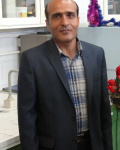| Authors | سیده راحله یوسفی - مژگان قنبری - امید امیری - زینب مرزحسینی - پوریا مهدی زاده - مرتضی حاجی زاده اوغاز - مسعود صلواتی نیاسری |
|---|---|
| Journal | Journal of the American Ceramic Society |
| Paper Type | Full Paper |
| Published At | 2021-01-26 |
| Journal Grade | ISI |
| Journal Type | Electronic |
| Journal Country | United Kingdom |
| Journal Index | SCOPUS ,JCR |
Abstract
Semiconductor heterogeneous photocatalysis has been received much attention from the scientific and researchers in the last decade. The combination of two semiconductors with various energy diagram can dramatically enhance the lifetime and separation of the charge carriers, restrain photogenerated electron-hole recombination, and considerably enhance photocatalytic performance as compared with other single or binary components. In this regard, we introduced the Dy2BaCuO5/Ba4DyCu3O9.09 nanocomposites as active photocatalysts below UV radiation. Dy2BaCuO5/ Ba4DyCu3O9.09 nanocomposites were prepared by a simple hydrothermal method and applied as a catalyst to treat water containing organic pollutions and microorganisms. Dy2BaCuO5/Ba4DyCu3O9.09 nanocomposites degraded Methyl Orange (MO) about 87.0% after 120 min. In addition, these nanocomposites show antimicrobial activity against Gram-positive species, including a pathogenic strain of Enterococcus faecalis, and Staphylococcus aureus, and a Gram-negative species, including Klebsiella pneumonia and Escherichia coli.
